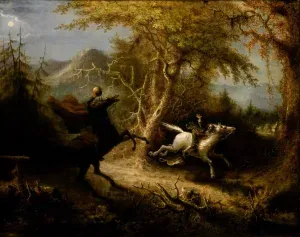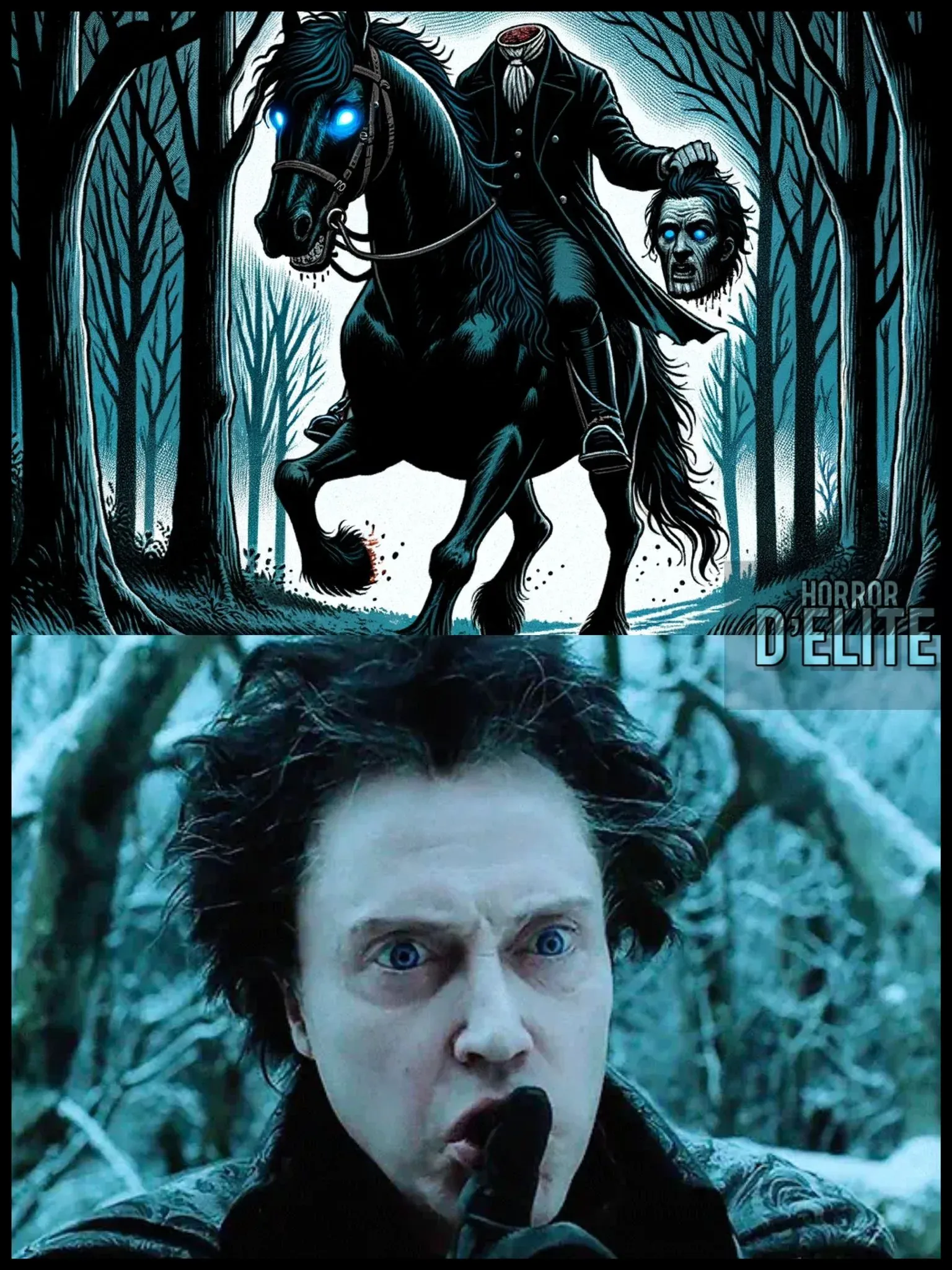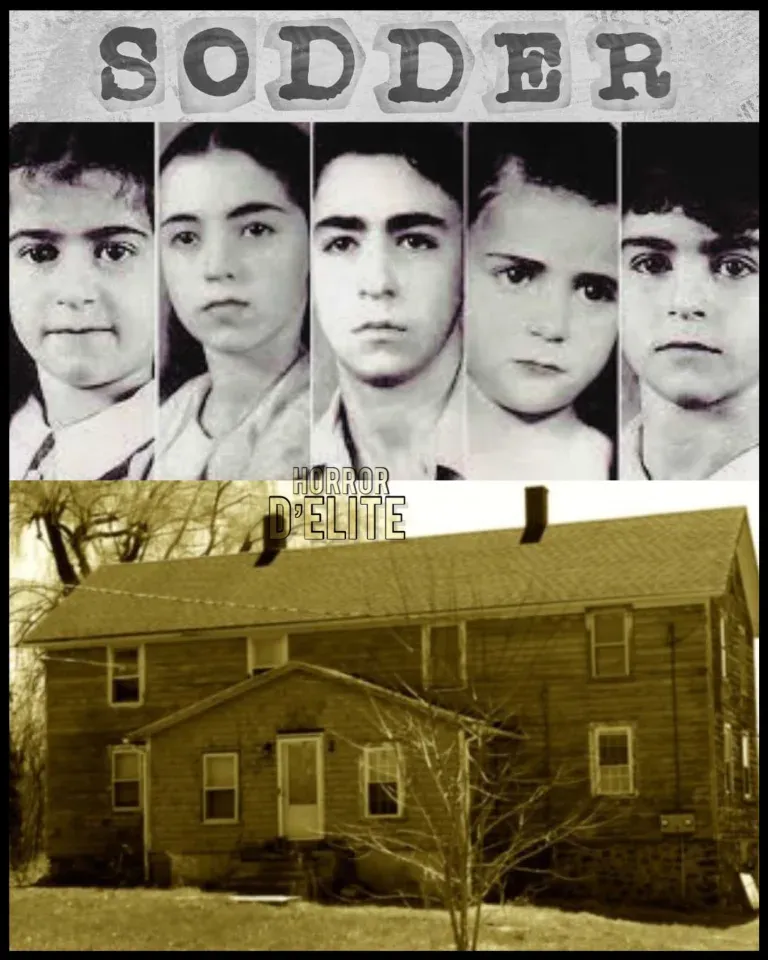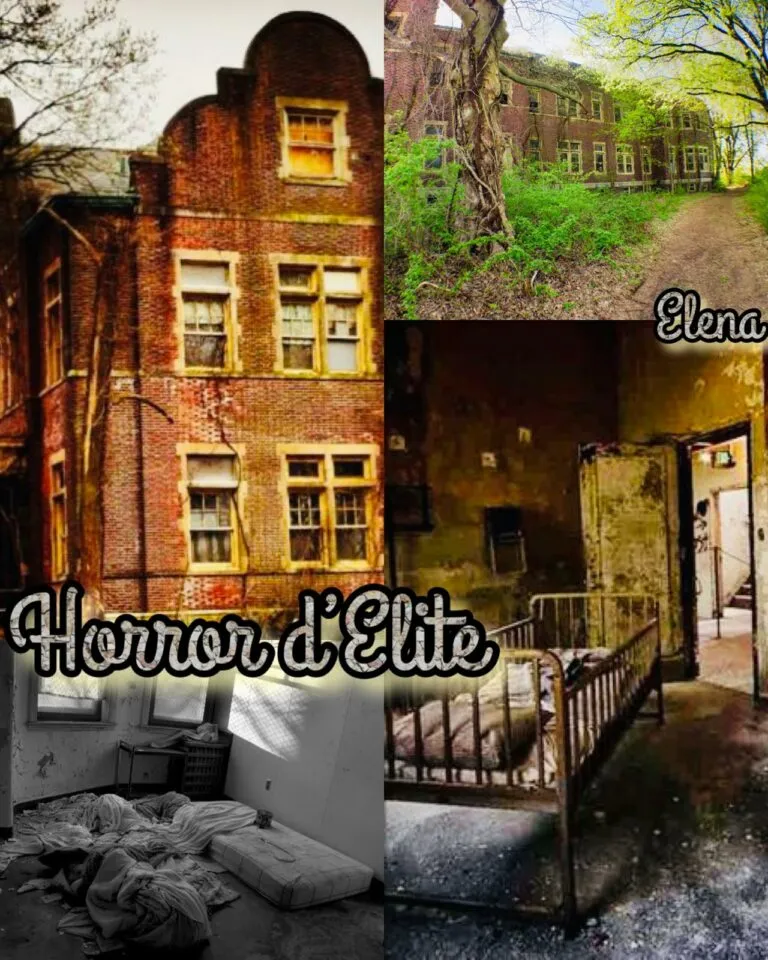The Legend of the Headless Horseman
 The Legend of the Headless Horseman – A Tale of Spectral Terror
The Legend of the Headless Horseman – A Tale of Spectral Terror
The Headless Horseman is one of the most enduring and eerie figures in folklore and popular culture. This phantom knight, known for his missing head and spectral presence, has haunted tales and legends for centuries. Although the most famous version of this sinister tale comes from Washington Irving’s 1820 short story, “The Legend of Sleepy Hollow,” variants of the Headless Horseman legend exist in different cultures and literary works, each adding a unique twist to this macabre narrative.
Origins and Variants
 The Headless Horseman legend has deep roots in the cultural traditions and myths of various countries. In European mythology, headless apparitions are often associated with restless spirits of those who have met a violent or untimely death. The Headless Horseman has been depicted in various ways, from a vengeful specter seeking justice to a tragic figure doomed to ride eternally in the night.
The Headless Horseman legend has deep roots in the cultural traditions and myths of various countries. In European mythology, headless apparitions are often associated with restless spirits of those who have met a violent or untimely death. The Headless Horseman has been depicted in various ways, from a vengeful specter seeking justice to a tragic figure doomed to ride eternally in the night.
In Ireland, for instance, the Dullahan is a headless figure who rides a black horse and carries his head under one arm. The Dullahan is considered an omen of death, appearing at the homes of those who are about to die. His unsettling presence is enough to instill terror in those who see him, and his arrival is often accompanied by the sound of hooves and the clattering of his head.
In Scottish folklore, the Bogle Horse or Hobbledehoy is a headless horseman often associated with the supernatural. This figure is usually depicted as a spectral presence that causes mischief or deceives travelers, and like the Dullahan, it is linked to death and the world of ghosts.
“The Legend of Sleepy Hollow” by Washington Irving
The most famous version of the Headless Horseman comes from Washington Irving’s short story, “The Legend of Sleepy Hollow,” published in 1820 as part of “The Sketch Book of Geoffrey Crayon, Gent.” Set in a Dutch colony along the western shore of the Tappan Zee River in New York State, the story follows Ichabod Crane, a schoolteacher who encounters the Headless Horseman during his nighttime ride home.
In Irving’s version, the Headless Horseman is a Hessian soldier who lost his head to a cannonball during the American Revolutionary War. The ghostly horseman, now in search of his lost head, is said to haunt the area around Sleepy Hollow. The story builds suspense and horror as Ichabod Crane, a superstitious and cowardly character, becomes entangled in the legend, culminating in a dramatic and ambiguous ending where Ichabod disappears, leaving behind only a shattered pumpkin and rumors of a headless ghost.
Irving’s tale blends elements of folklore, ghost stories, and American colonial history, creating a rich narrative that has captivated readers for generations. The Headless Horseman in Irving’s story has become an iconic figure in American literature, symbolizing the conflict between rationality and superstition.
Other Literary References
Beyond Irving’s famous version, the Headless Horseman has inspired many other works. One of the most intriguing adaptations is “The Headless Horseman” by Mayne Reid, published in 1865. Reid, known for his adventure novels and frontier tales, offers his own version of the Headless Horseman myth. In his novel, the headless horseman is a vengeful figure tied to war and justice, and the story unfolds amidst the wild and inhospitable landscapes of post-revolutionary America. Reid reimagines the myth in an adventure and mystery context, adding new shades of terror and suspense to the legend.
In more recent times, “The Hollow” by Jessica Verday, published in 2009, reimagines the Headless Horseman legend for a younger generation. The novel is the first in a trilogy that blends folklore elements with a contemporary plot. Set in a small town, the book follows Abbey, a young girl who becomes entangled in a series of mysterious and unsettling events related to the Headless Horseman legend. Verday’s narrative mixes romance, mystery, and the supernatural, offering a modern and engaging retelling of the classic legend.
Cultural Impact and Adaptations
The Headless Horseman has left a lasting mark on popular culture, inspiring numerous adaptations in literature, film, and television. From Tim Burton’s 1999 film “Sleepy Hollow” to various animated and live-action portrayals, the eerie horseman has become a recurring symbol of Halloween tales and ghost stories.
 The enduring appeal of the character lies in its ability to evoke fear and fascination. The image of a headless horseman galloping through the night taps into primal fears of the unknown and the supernatural. The Headless Horseman represents the ultimate form of disembodiment, a figure of terror that defies the natural order.
The enduring appeal of the character lies in its ability to evoke fear and fascination. The image of a headless horseman galloping through the night taps into primal fears of the unknown and the supernatural. The Headless Horseman represents the ultimate form of disembodiment, a figure of terror that defies the natural order.
The Legend Continues
The legend of the Headless Horseman continues to captivate audiences with its unsettling image and suspenseful storytelling. Whether as a symbol of death, a mischievous specter, or a tragic figure seeking justice, the Headless Horseman remains a powerful symbol of the unknown and the supernatural.
As we recount and reinterpret this legend, it reminds us of the power of folklore to shape our understanding of fear and the supernatural. The Headless Horseman will continue to ride through our collective imaginations, a timeless figure of spectral terror and dark intrigue.
Subscribe to our YouTube channel







